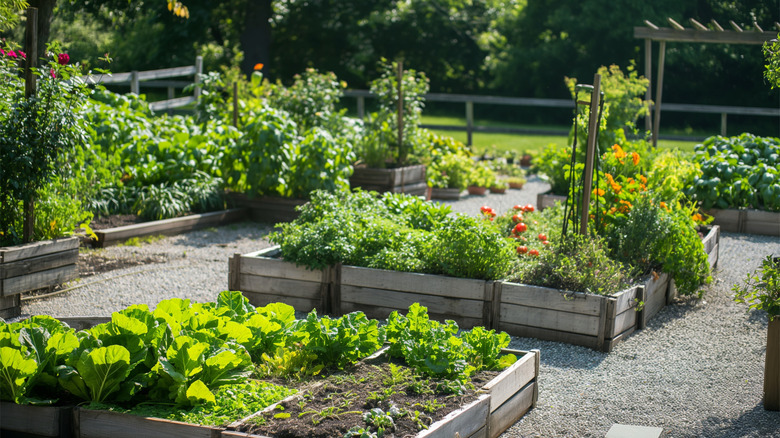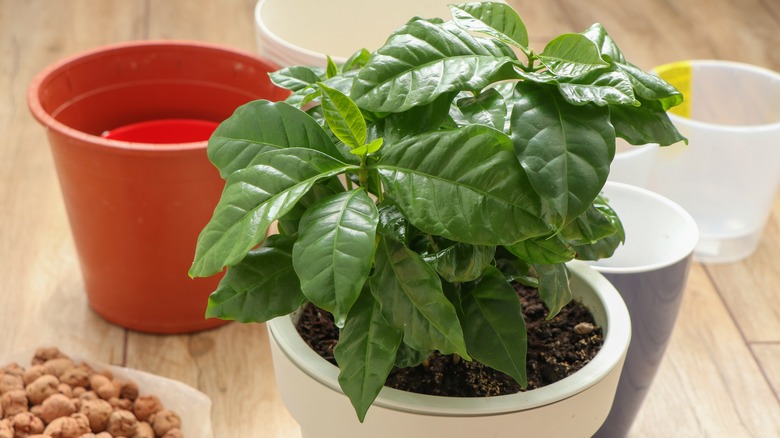What Plants Are Considered Luxury Crops And Can You Grow Them In Your Garden?
When it comes to growing crops at home, you are probably aware of many common vegetables you can plant in your garden by sprinkling seeds, such as lettuce, carrots, and kale. It is always fun to grow your own, but if you have the basics down and consider yourself a bit of a seasoned gardener, you may be considering more difficult or rare crops you can try out. So, the term luxury crops may pique your interest.
Luxury crops refer to plants that have a high market value, rather than being valued for their sustenance or taste, such as cocoa, tea, saffron, truffles, and vanilla. Although it depends on the individual plants, a lot of these luxury crops are considered so because of their unique growing conditions. As they can't thrive and grow everywhere, they are seen as high-value. So, can you grow any of these luxury crops in your own yard? Kind of, if you have the time and patience, and don't mind failing a few times before finding success. Coffee plants, saffron flowers, and vanilla are probably the best options to experiment with at home. And who knows, you may even discover that you have a knack for luxury crop care!
What to consider when growing luxury crops at home
If you have decided to grow luxury crops at home, you can't cross coffee beans off your shopping list just yet. A lot of luxury crops, such as the coffee plant (Coffea arabica) and vanilla orchids (Vanilla planifolia), come from tropical or Mediterranean climates. This means that to grow them at home, you need to replicate their native environment, and this can be difficult if you live in colder locations. So, you need to consider your USDA Hardiness Zone and what setup you have. If you want to grow a coffee plant or a vanilla orchid, you will need to ensure the humidity is high and the temperature is warm. Greenhouses or indoor growing are usually best for a lot of these luxury crops. Furthermore, certain high-end plants take a while to get to a point of producing crops. Coffee plants, for example, can take up to four years to mature. So, unlike other crops grown at home, you won't get a yearly harvest straight away. It is best to see these plants as long-term hobbies rather than a grow-to-harvest plant.
However, other luxury crops are fairly low-maintenance and easy to grow, and it's the harvesting that makes them high-value. For example, you may have already grown saffron. Saffron comes from the autumn crocus (Crocus sativus), which is a stunning fall-blooming flower. To harvest this plant, you need to take tweezers and pick the long red stigmas out of the center of each flower. So, if you want to harvest saffron at home, you need to consider whether you have the time and patience for it.
How to grow luxury crops at home
Vanilla orchid vines can be grown outdoors in hardiness zones 10a to 11a. If you live somewhere colder, you will need to plant them indoors. However, as vanilla orchid vines can get to over 200 feet, you need to consider the space you have. You will need to plant your orchid vines somewhere near a structure they can climb along. They prefer a location in bright, dappled shade with decent airflow. Once they have flowered, you will need to self-pollinate them to allow them to produce vanilla pods.
If coffee is more your thing, you can grow a coffee plant outdoors in zones 10 to 12. These edible plants are also perfect for growing indoors as houseplants. If you choose to grow it as a houseplant, it needs to be planted in a well-draining potting mix and placed in a location with bright light and high humidity. For outdoor growing in warmer climates, the coffee plant does well with partial shade. Significant fluctuations in daily temperatures or temperatures lower than 41 degrees Fahrenheit can harm the plant.
The saffron plant, the autumn crocus, can be grown outdoors in zones 5 to 8. They grow from corms, which should be planted in late August or September for fall flowering. Place them in a location with full sun and well-draining soil, spacing them around 4 inches apart and 4 inches deep. The corms will often multiply, which means you can divide them for more flowers (and saffron) the following year.


